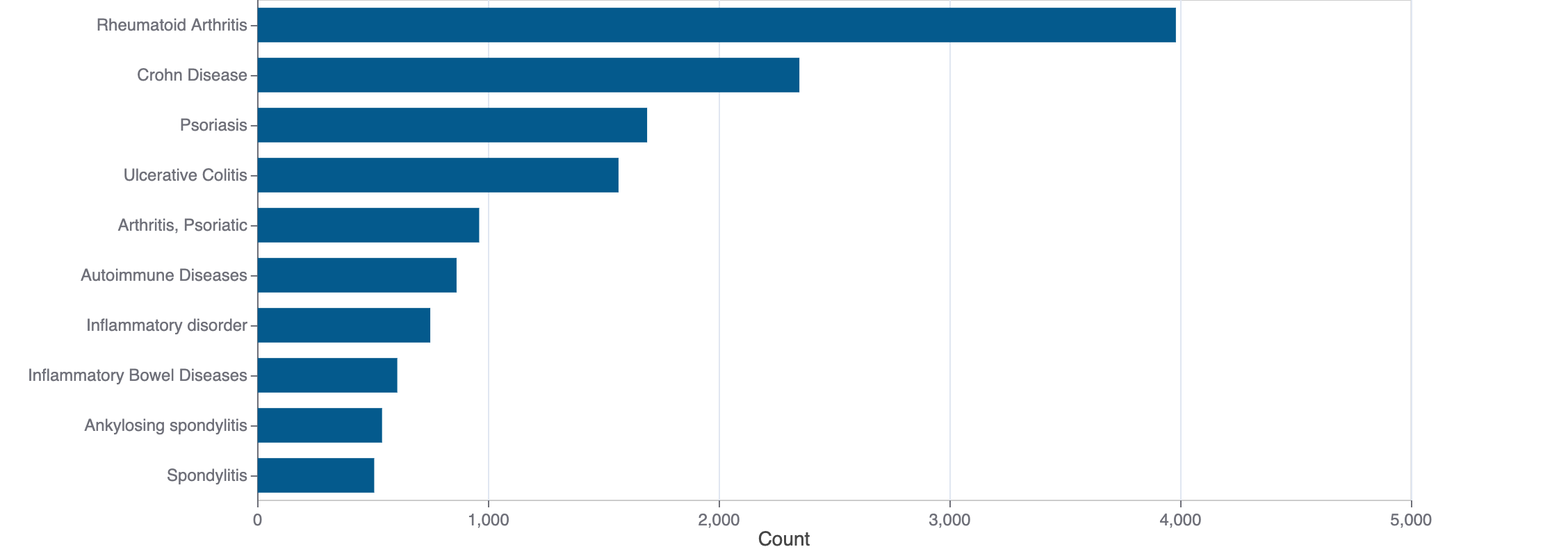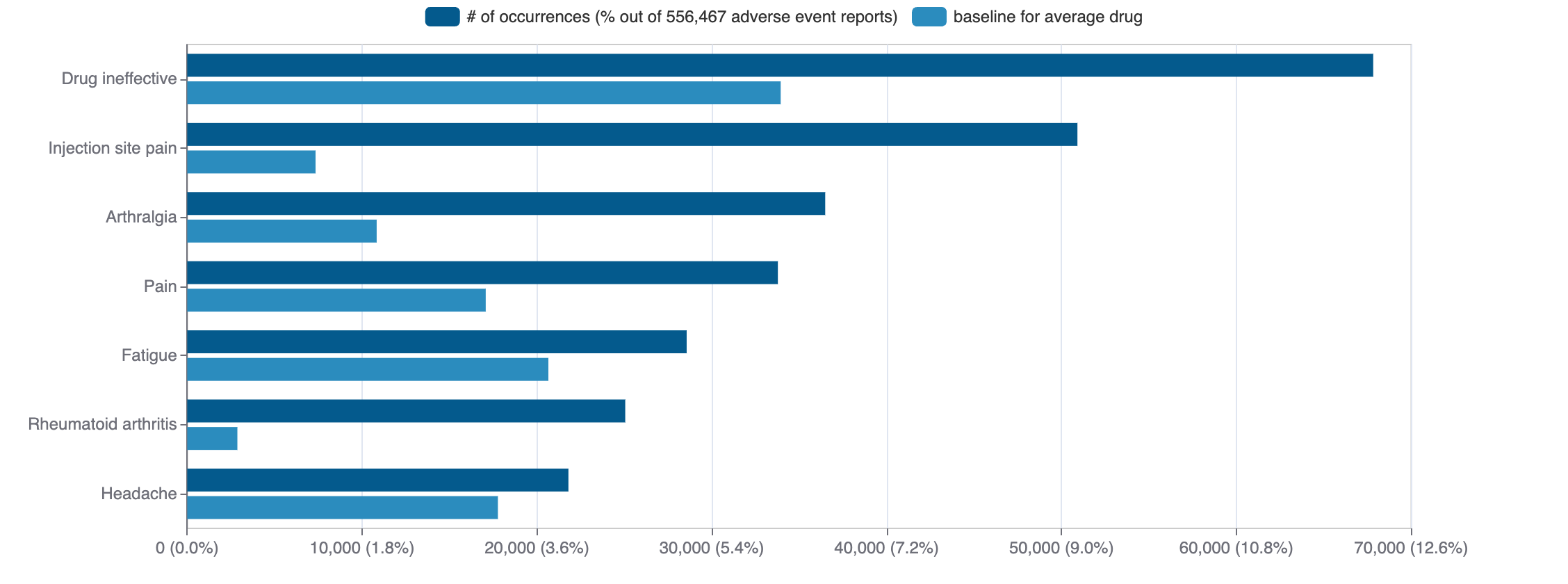Droperidol
Inapsine, Innovar (droperidol) is a small molecule pharmaceutical. Droperidol was first approved as Inapsine on 1982-01-01. It is used to treat pain and psychotic disorders in the USA.
Download report
Favorite
Commercial
Trade Name
FDA
EMA
Inapsine (generic drugs available since 1988-02-29)
Drug Products
FDA
EMA
New Drug Application (NDA)
New Drug Application (NDA)
Abbreviated New Drug Application (ANDA)
Abbreviated New Drug Application (ANDA)
Labels
FDA
EMA
Brand Name | Status | Last Update |
|---|---|---|
| droperidol | ANDA | 2019-10-29 |
Indications
FDA
EMA
Indication | Ontology | MeSH | ICD-10 |
|---|---|---|---|
| pain | EFO_0003843 | D010146 | R52 |
| psychotic disorders | — | D011618 | F20.81 |
Agency Specific
FDA
EMA
No data
Patent Expiration
No data
Clinical
Clinical Trials
316 clinical trials
View more details

Mock data
Subscribe for the real data
Subscribe for the real data
Indications Phases 4
Indication | MeSH | Ontology | ICD-10 | Ph 1 | Ph 2 | Ph 3 | Ph 4 | Other | Total |
|---|---|---|---|---|---|---|---|---|---|
| Acne vulgaris | D000152 | EFO_0003894 | L70 | 3 | 6 | 4 | 8 | 1 | 19 |
| Rosacea | D012393 | L71 | 3 | 1 | 4 | 8 | 1 | 17 | |
| Covid-19 | D000086382 | U07.1 | 1 | 3 | 5 | 3 | 2 | 13 | |
| Infections | D007239 | EFO_0000544 | — | — | — | 6 | 4 | 10 | |
| Periodontal diseases | D010510 | K05.6 | — | 3 | 2 | 2 | 3 | 9 | |
| Chlamydia infections | D002690 | EFO_0007205 | A74.9 | — | 1 | 2 | 5 | — | 8 |
| Chronic obstructive pulmonary disease | D029424 | EFO_0000341 | J44.9 | — | — | 2 | 3 | 1 | 6 |
| Syphilis | D013587 | EFO_0007504 | A53.9 | — | — | 2 | 4 | — | 6 |
| Lyme disease | D008193 | A69.2 | — | — | 2 | 2 | 1 | 5 | |
| Erythema chronicum migrans | D015787 | A26.0 | — | — | — | 1 | 4 | 5 |
Show 51 more
Indications Phases 3
Indication | MeSH | Ontology | ICD-10 | Ph 1 | Ph 2 | Ph 3 | Ph 4 | Other | Total |
|---|---|---|---|---|---|---|---|---|---|
| Amyloidosis | D000686 | EFO_1001875 | E85 | 1 | 3 | 1 | — | 1 | 4 |
| Chronic periodontitis | D055113 | EFO_0006343 | K05.3 | — | 3 | 2 | — | — | 4 |
| Graves ophthalmopathy | D049970 | EFO_1001466 | 1 | 3 | 1 | — | 1 | 4 | |
| Filarial elephantiasis | D004605 | EFO_0007272 | B74.0 | — | — | 3 | — | — | 3 |
| Lymphedema | D008209 | Q82.0 | — | — | 3 | — | — | 3 | |
| Filariasis | D005368 | B74 | — | — | 3 | — | — | 3 | |
| Tuberculosis | D014376 | EFO_0000774 | A15-A19 | — | 2 | 1 | — | — | 3 |
| Heart failure | D006333 | EFO_0003144 | I50 | — | 1 | 1 | — | — | 2 |
| Ventricular remodeling | D020257 | — | 1 | 1 | — | — | 2 | ||
| St elevation myocardial infarction | D000072657 | — | 1 | 1 | — | — | 2 |
Show 22 more
Indications Phases 2
Indication | MeSH | Ontology | ICD-10 | Ph 1 | Ph 2 | Ph 3 | Ph 4 | Other | Total |
|---|---|---|---|---|---|---|---|---|---|
| Colorectal neoplasms | D015179 | — | 2 | — | — | 1 | 3 | ||
| Ulcerative colitis | D003093 | EFO_0000729 | K51 | — | 2 | — | — | 1 | 3 |
| Pelvic inflammatory disease | D000292 | EFO_1001388 | N70-N77 | — | 1 | — | — | 1 | 2 |
| Non-small-cell lung carcinoma | D002289 | — | 1 | — | — | 1 | 2 | ||
| Anthrax | D000881 | A22 | 1 | 1 | — | — | — | 2 | |
| Pancreatic neoplasms | D010190 | EFO_0003860 | C25 | — | 1 | — | — | 1 | 2 |
| Breast neoplasms | D001943 | EFO_0003869 | C50 | 1 | 1 | — | — | — | 2 |
| T-cell lymphoma cutaneous | D016410 | C84.A | 1 | 1 | — | — | — | 2 | |
| Atopic dermatitis | D003876 | EFO_0000274 | L20 | — | 2 | — | — | — | 2 |
| Mansonelliasis | D008368 | EFO_0007357 | B74.4 | — | 2 | — | — | — | 2 |
Show 57 more
Indications Phases 1
Indication | MeSH | Ontology | ICD-10 | Ph 1 | Ph 2 | Ph 3 | Ph 4 | Other | Total |
|---|---|---|---|---|---|---|---|---|---|
| Healthy volunteers/patients | — | 6 | — | — | — | 2 | 8 | ||
| Therapeutic equivalency | D013810 | 5 | — | — | — | — | 5 | ||
| Tennis elbow | D013716 | EFO_1001896 | M77.1 | 1 | — | — | — | 1 | 2 |
| Arteriovenous malformations | D001165 | 2 | — | — | — | — | 2 | ||
| Elbow tendinopathy | D000070639 | M77.0 | 1 | — | — | — | — | 1 | |
| Coronavirus infections | D018352 | EFO_0007224 | B34.2 | 1 | — | — | — | — | 1 |
| Severe acute respiratory syndrome-related coronavirus | D045473 | NCBITaxon_227859 | 1 | — | — | — | — | 1 | |
| Cardio-renal syndrome | D059347 | 1 | — | — | — | — | 1 | ||
| Intracranial aneurysm | D002532 | EFO_0003870 | I67.1 | 1 | — | — | — | — | 1 |
| Cavernous hemangioma | D006392 | D18.0 | 1 | — | — | — | — | 1 |
Show 6 more
Indications Without Phase
Indication | MeSH | Ontology | ICD-10 | Ph 1 | Ph 2 | Ph 3 | Ph 4 | Other | Total |
|---|---|---|---|---|---|---|---|---|---|
| Tick-borne encephalitis | D004675 | EFO_1001309 | A84 | — | — | — | — | 2 | 2 |
| Rheumatoid arthritis | D001172 | EFO_0000685 | M06.9 | — | — | — | — | 2 | 2 |
| Malaria | D008288 | EFO_0001068 | B54 | — | — | — | — | 1 | 1 |
| Mycoplasma pneumonia | D011019 | EFO_0007387 | J15.7 | — | — | — | — | 1 | 1 |
| Aseptic meningitis | D008582 | EFO_1000823 | G03.0 | — | — | — | — | 1 | 1 |
| Staphylococcus aureus | D013211 | NCBITaxon_1280 | — | — | — | — | 1 | 1 | |
| Female infertility | D007247 | EFO_0008560 | N97 | — | — | — | — | 1 | 1 |
| Liver cirrhosis | D008103 | EFO_0001422 | K74.0 | — | — | — | — | 1 | 1 |
| Infertility | D007246 | EFO_0000545 | — | — | — | — | 1 | 1 | |
| Diet therapy | D004035 | — | — | — | — | 1 | 1 |
Show 23 more
Epidemiology
Epidemiological information for investigational and approved indications
View more details
Drug
General
| Drug common name | DROPERIDOL |
| INN | droperidol |
| Description | Droperidol is an organofluorine compound that is haloperidol in which the hydroxy group has been eliminated with the introduction of a double bond in the piperidine ring, and the 4-chlorophenyl group has been replaced by a benzimidazol-2-on-1-yl group. It is used in the management of chemotherapy-induced nausea and vomiting, and in conjunction with an opioid analgesic such as fentanyl to maintain the patient in a calm state of neuroleptanalgesia with indifference to surroundings but still able to cooperate with the surgeon. It has a role as an antiemetic, a dopaminergic antagonist, a first generation antipsychotic and an anaesthesia adjuvant. It is a member of benzimidazoles, an organofluorine compound and an aromatic ketone. |
| Classification | Small molecule |
| Drug class | antipsychotics (haloperidol type) |
| Image (chem structure or protein) | |
| Structure (InChI/SMILES or Protein Sequence) | O=C(CCCN1CC=C(n2c(=O)[nH]c3ccccc32)CC1)c1ccc(F)cc1 |
Identifiers
| PDB | — |
| CAS-ID | 548-73-2 |
| RxCUI | 3648 |
| ChEMBL ID | CHEMBL1108 |
| ChEBI ID | 4717 |
| PubChem CID | 3168 |
| DrugBank | DB00450 |
| UNII ID | O9U0F09D5X (ChemIDplus, GSRS) |
Target
Agency Approved
No data
Alternate
No data
Variants
Clinical Variant
No data
Financial
No data
Trends
PubMed Central
Top Terms for Disease or Syndrome:

Mock data
Subscribe for the real data
Subscribe for the real data
Additional graphs summarizing 3,048 documents
View more details
Safety
Black-box Warning
Black-box warning for: Droperidol
Adverse Events
Top Adverse Reactions

Mock data
Subscribe for the real data
Subscribe for the real data
21,334 adverse events reported
View more details
Premium feature
Learn more about premium features at pharmakb.com
Learn more
